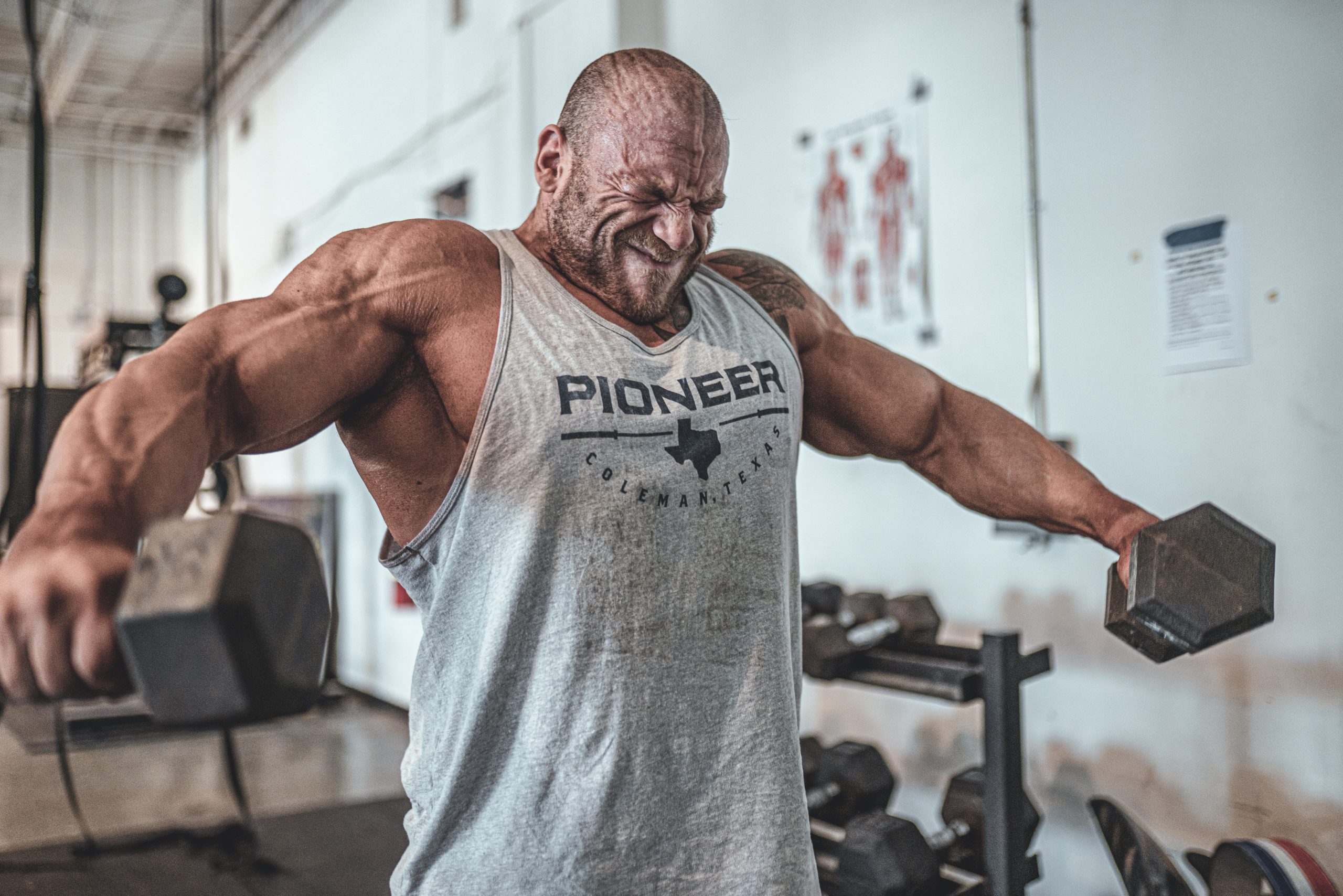
I’ve whined enough on this blog about how boring I’ve found bodybuilding training…. but that’s a thing of the past. I actually believe I’ve managed to put together a training methodology for hypertrophy that improves strength and aesthetics significantly – and is fun as hell.
This month, I’ll share a bit about that method!
The Volume Problem
The biggest challenge I faced with when I started training for bodybuilding involved loading movements heavily while still getting in sufficient volume for growth. In my opinion, the combination of heavy loading (in absolute terms) and high volume (in relative terms) is at the heart of training for “powerbuilding,” and is crucial to develop the thickness on stage that many bodybuilders lack.
Unfortunately, if you’re familiar with the basics of periodization, you know that when load increases, volume must decrease for progress to remain sustainable. And if volume decreases, the stimulus for hypertrophy decreases as well.
The solution I eventually developed involves autoregulating volume rather than intensity for my major movements.
My Powerbuilding Solution
However, the process is a bit complex. I'll attempt to break it down, step by step:
- Prior to my session, I'll choose a specific rest time. I generally stick with 2 minutes for upper body and 3 for lower. With athletes who lack work capacity, I tend to use slightly longer rest times.
-
When training a major movement, I'll work up to a top set in a given rep range. Honestly, I don't think rep range matters TOO much, but according to much of the research, you would aim for the 3-6 rep range to prioritize strength, and 7-10 to prioritize hypertrophy. Higher rep ranges tend to contribute more to endurance, although they can be helpful late in prep for safety’s sake.
During my last training session, I hit my top set of incline pin presses from chest level at 365x7.
-
After that top set, I drop the weight by a given percentage. This percentage does matter:
- A 3-5% drop results in a lower volume, higher intensity session
- A 7-9% drop is both moderate in volume and intensity
- I reserve 10-13% drops for very high volume sessions when I want to suffer
As you might expect, I generally stick with a 7-9% reduction in weight. Using my last session as an example, 365 minus 7-9% is 330-340, so I used 335.
- Every time interval, I'll do a set with that reduced weight, until I hit the same level of effort as my top set.
The whole thing might look like this:
- 365x7@9
- 335x7@8
- 335x7@9
Had I used a 10-13% drop, it'd be something like:
- 365x7@9
- 325x7@7.5
- 325x7@8.5
- 325x7@9
I'm pretty sure most EliteFTS readers are familiar with RPEs, but in case you're not, this is the reference I use.
Why (And How) It Works
This method is superior to conventional bodybuilding approaches because it allows you to tailor the primary programming variable for hypertrophy (volume) accord to your energy levels on any given day. In other words: on days when you're feeling crappy, you'll end up performing less volume, and on days when you're feeling good, you have the freedom to crush it. No matter what, though, you will always provide some stimulus for growth, because the loading will always be sufficiently heavy.
This method has worked incredibly well throughout my offseason and I use it for most of my "meat and potatoes" movements – variants of the squat, bench press, and deadlift. That movement selection is very important, too, and I’ll address it in the next blog post.
If you’d like to learn more about my powerbuilding method, or want to follow along with my prep for NPC Nationals in November, you can join my coaching team by clicking here.








